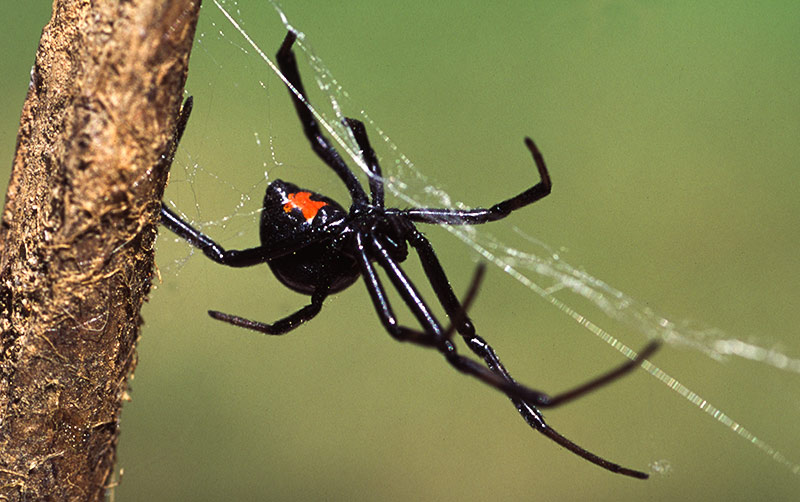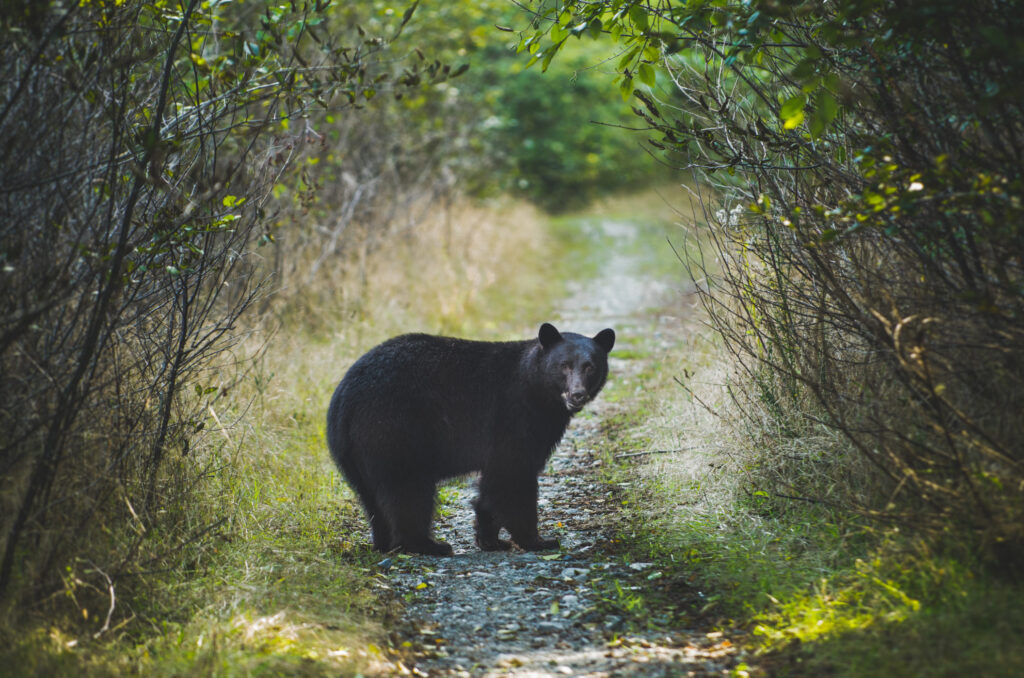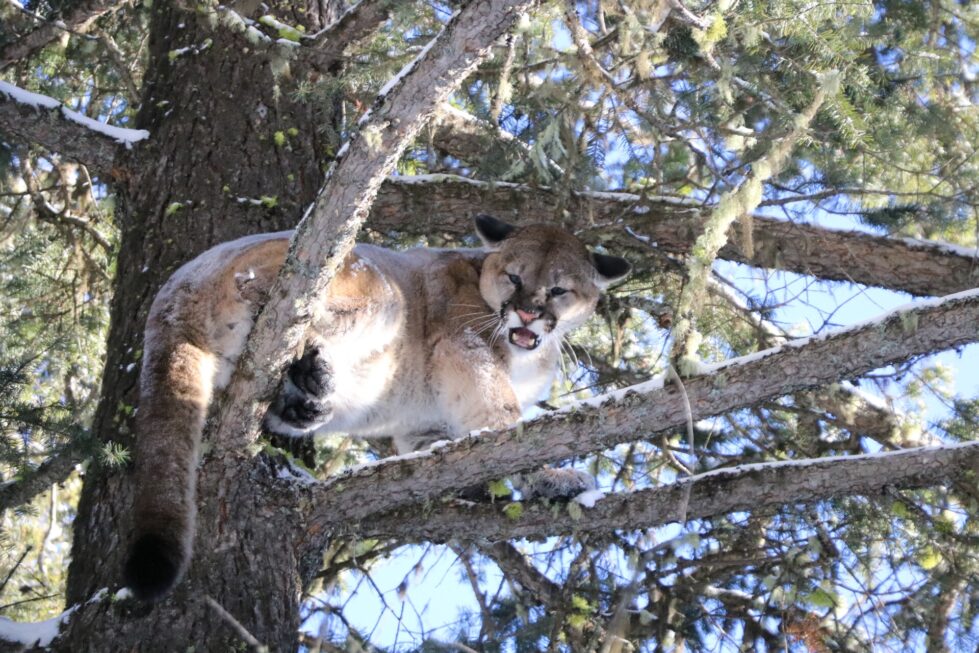Did you know there are several deadly wild animals that may be lurking around your home? Your home is your sanctuary, but it isn’t always the safest—especially when wild animals get too close. Here are the top 10 deadly wild animals in U.S. and how to keep them at a safe distance.
If you have a yard, there’s no doubt that you’ve been faced with an uninvited animal visitor or two. From raccoons in the garbage to squirrels in the attic, these critters seem to get into everything! But what about dangerous wild animals that can encroach upon your home?
As the world’s population increases so does the number of people living in close proximity to wildlife. The vast majority of homeowners are unaware that they may have a dangerous and potentially deadly wild animal as their new neighbor until it’s too late.
The Deadliest Animals you can Find in your Backyard
Depending on where you live in the U.S. and the type of environment of your property can determine what types of scary, wild animals you could find in your own backyard.
Here are some typical wild animal invaders, and their main locations:
- Rattlesnakes – Literally anywhere in the US. Rattlesnakes are found in almost every part of the continental United States, but they’re especially common in the Southwest. The best way to avoid a run-in with this snake is to make your property as unappealing as possible. Avoid touching or aggravating a rattlesnake if you happen upon one.
- Alligators – American alligators are found in the southeast United States: all of Florida and Louisiana; the southern parts of Georgia, Alabama, and Mississippi; coastal South and North Carolina; East Texas, the southeast corner of Oklahoma, and the southern tip of Arkansas. Alligators in Florida and Louisiana are often spotted in backyards or ponds where people reside. Attacks don’t happen often, but when they do, they can be fatal. According to the Florida Fish & Wildlife Commission, there have been 24 fatal alligator attacks since 1973.
- Wild Hogs – Also known as feral hogs, or wild boars are very dangerous not only because of their aggression but also because they are the carriers of diseases that can be passed on to humans such as tuberculosis, hepatitis E and influenza A. Due to the overpopulation of wild hogs throughout the United States, these creatures can be hunted following local, state, and federal guidelines.
- Insects can be dangerous (and scary, too!) Black Widow spiders are not to be messed with! Black widows are considered the most venomous spider in North America. Their venom is reported to be 15 times stronger than a rattlesnake’s, according to NCSU. Black widows are highly poisonous.

- Mountain Lions or Bobcats – also known as a cougar, puma, panther, or catamount—is a large cat species native to the Americas. Though not common, a mountain lion can be aggressive. A total of 125 attacks, 27 of which are fatal, have been documented in North America in the past 100 years. This puts both large cats at the top of the list of Deadly Wild Animals.
- Bobcats are a rarely seen animal, but that doesn’t mean they aren’t around. They can weigh up to 40 pounds which makes them very dangerous to humans as well as pets. Bobcats establish and defend a territory and will attack if approached by humans, especially if they are defending young. A highly fatal disease of domestic felines, Cytavxzoonosis, is carried and transmitted by bobcats.
- Rabid Bats – Bats are an important part of our ecosystem, but they are wild animals and can carry rabies. If you ever see a bat around your home, do not touch it. While bats most commonly roost in buildings, attics, barns, trees, and caves they have been known to roost in less common areas such as under picnic tables and under umbrellas left in the outdoors.
Oftentimes, homeowners will have bats living under their home or in the attic and never even know it! Though rabies deaths are uncommon in the United States, it is one of the world’s most deadly diseases impacting 5 billion people annually and resulting in as many as 70,000 human deaths worldwide each year. The best defense is tightening up your attic to make sure a bat colony doesn’t get in and get cozy! Professional wildlife removal experts can perform bat exclusion to keep your home safe. - Brown Bears – Thanks to regulated hunting and more habitat, there’s a pretty dramatic increase in bear populations across the U.S., and people are going to be encountering bears more and more. Brown Bears can be deadly if they are hungry and/or protecting their young. Considered unpredictable in temperament, a brown bear will attack if they are surprised or feel threatened. Mother bears with cubs account for the majority of injuries and fatalities in North America. Most people encounter brown bears in areas where they live or vacation (Alaska, western Canada, and parts of Washington, Montana, and Wyoming)
- Killer Bees – Ok, as scary as bears are, the likelihood of getting killed by a bee is greater. Africanized honeybees (aka killer bees) are considered Deadly Wild Animals and are found in southern California, southern Nevada, Arizona, Texas, New Mexico, Oklahoma, western Louisiana, southern Arkansas, and central and southern Florida. They aren’t aggressive for the sake of just being aggressive, though. They usually only attack when provoked.
Killer bees are quicker to react to disturbances and they will chase an intruder more than a quarter-mile for an attack. Known to kill horses, humans, and other large animals, killer bee victims receive 10 times more stings than victims of European honeybees.
Because Africanized honeybees look so similar to European honeybees, contacting a licensed pest control professional for bee removal is the best way to know if there is an infestation. Look for signs of nests in unexpected places.
Be careful around holes in the ground, especially when mowing the lawn, pulling weeds or mulching. If you live within 100 miles of an area where Africanized honeybees are common, it is not recommended to approach any nest. - Mice, rodents infected with Hantavirus – Hantavirus is a virus that is found in the urine, saliva, or droppings of infected deer mice and other wild rodents (cotton rats, rice rats in the southeastern Unites States and the white-footed mouse and the red-backed vole). It causes a rare but serious lung disease called Hantavirus pulmonary syndrome (HPS)
- Mosquitos – According to the CDC, mosquitoes are considered THE deadliest creature in the world, contributing to over 1,000,000 deaths per year. A mosquito can carry a multitude of viruses and parasites, and while only some types of mosquitoes can spread viruses and parasites to people and animals, you can’t tell which mosquito could be spreading germs when it bites.
West Nile virus is one of the most common mosquito-borne diseases in the continental United States. When we think of Deadly Wild Animals, we rarely think of mosquitoes. However, Dengue, chikungunya, and Zika virus outbreaks have occurred in US states and territories, including Florida, Hawaii, Texas, Puerto Rico, the US Virgin Islands, and American Samoa. Mosquito protection and mosquito control is the best defense against these harmful insects.

How to Avoid Dangerous Wildlife Encounters
What steps can be taken to reduce the risk of encountering a dangerous animal? Here are some tips to follow when you’re out on a nature walk, on your acreage, or even in your backyard.
- Keep an eye out for bears, mountain lions and coyotes near trails
- Install proper fencing on your property or back yard to keep wild animals out. Research the best fence options for your location and local wildlife habitat.
- If you see a snake, keep calm and back away slowly while facing the snake head on. Do not touch it or attempt to kill it.
- Try not to walk alone in remote areas where wildlife is abundant. Having more people around will reduce the risk of encountering animals such as bears, mountain lions, or coyotes. Bring a walking stick with you or a whistle as a noise deterrent
- Walk with confidence and with a flashlight on walks at night so wild animals can sense your presence before they have an opportunity to attack
- Always be aware of your surroundings and respect the boundaries of wildlife.

Tips for Safe Living in Areas with Wildlife Activity
- Be aware of the wildlife that lives in your area and keep an eye out for signs of habitation (i.e., fox and coyote dens, bear dens, snake holes, etc.)
- Install proper fencing to keep your yard, pets and family safe from curious (or hungry) wild animals.
- Keep trash bins tightly closed in metal cans and keep trash away from areas where bears can reach it.
- Invest in wildlife proofing your home to reduce the risk of animals living in your attic, chimney, crawl spaces, under porches or in walls.
- Make your property as uninviting to wildlife as possible. Eliminate food sources, hiding places and use devices such sound deterrents and motion lights to deter wildlife.
- Make sure all doors and windows can close securely and that you don’t have pet doors that are accessible to wildlife.

